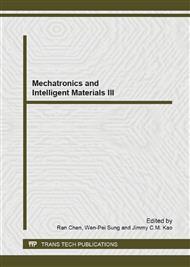p.704
p.708
p.712
p.716
p.720
p.724
p.729
p.733
p.737
Design of Fuzzy PID Controller Based on Adaptive Particle Swarm Optimization with Cloud Theory
Abstract:
Researching optimization problems of controller is need of industrial process control ,in which PID controller is widely used,which its parameters can be equivalent to optimization problems. In the industrial control the PID controller is widely used in excitation control system to improve its control performance.In order to find the optimal PID controller parameters effectively ,a kind of Adaptive Particle Swarm Optimization method (CAPSO) based on Cloud Theory is applied to fuzzy PID controller. Through the establishment of particle swarm algorithm of fuzzy PID controller parameters optimization model, which it can be used to optimize the membership function of fuzzy PID controller. Particle code adopts real coding. Particle dimension is related with the number of the input variables divided by fuzzy set and the number of control rules of whole fuzzy control system, thus the parameters of PID control are optimized on real time. The result from the simulation shows that compared with PID control and fuzzy control this system has several advantages which are small overshoots ,fast response ,and good stable performance to improve the control performance of excitation control system.
Info:
Periodical:
Pages:
720-723
Citation:
Online since:
June 2013
Authors:
Price:
Сopyright:
© 2013 Trans Tech Publications Ltd. All Rights Reserved
Share:
Citation:


